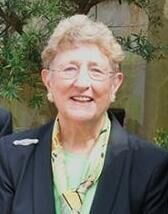
Toal
A South Carolina jury rejected claims Johnson & Johnson talcum powder caused a man’s cancer after a trial marked by multiple defense requests for a mistrial over the judge’s pro-plaintiff rulings.
Lawyers for Gregory Johnson argued the man’s peritoneal mesothelioma was caused by exposure to asbestos fibers in Johnson’s Baby Powder and other products. Mesothelioma is a cancer of the chest and abdominal lining that experts associate with asbestos, although peritoneal mesothelioma is extremely rare and since it is in the abdominal area, unlikely to be caused by inhaling asbestos fibers.
A jury delivered a defense verdict Thursday after two hours of deliberations, J&J said.
“Like the vast majority of cases tried to date, and consistent with decades of scientific research, another jury found that Johnson’s Baby Powder is safe, does not contain asbestos and does not cause cancer,” said Eric Haas, global head of litigation, in a prepared statement.
The jury ruled for J&J even after Judge Jean H. Toal prevented the company from presenting critical evidence, including opinions from medical experts that peritoneal mesothelioma can arise spontaneously. Pleural mesothelioma is closely associated with inhaling asbestos fibers in industrial settings, tends to have male victims and cases have declined significantly since asbestos was largely eliminated from the workplace. Peritoneal mesothelioma is far less common and rates have remained stable at several hundreds of cases a year, evenly split between men and women.
Johnson & Johnson attempted to present experts to testify that, in contrast to plaintiff expert claims, a large percentage of peritoneal mesothelioma cases have no known cause. But the judge repeatedly refused to allow the jury to hear those opinions, saying they would be a “diagnosis of exclusion” and were counter to what she knew about cancer.
“His opinion is that these mesothelial cancers are idiopathic,” she said of one defense witness, a cancer expert who was prepared to discuss peer-reviewed scientific articles on the disease Johnson is diagnosed with. “Nobody knows what the cause is. That's what idiopathic and spontaneous means. And that's not a legitimate diagnosis in my view.”
At other times during the trial, Toal seemed exasperated at defense efforts to undercut the plaintiff’s case. When a defense lawyer complained that the plaintiff has the burden of proving there was asbestos in baby powder and it caused Johnson’s cancer, the judge appeared to accept both premises as already proven.
The judge also refused to allow defense experts to mention the possibility of other sources of asbestos exposure, saying they were irrelevant. At the same time, she allowed multiple plaintiff experts to exclude all potential causes of cancer but Johnson’s Baby Powder.
The two sides wrangled at length in front of the judge over testimony by Matthew Sanchez, a frequent defense witness who J&J uses to rebut plaintiff experts who say they found asbestos fibers in cosmetic talc. Sanchez testifies that those experts are conflating several testing methods to confuse jurors about what constitutes asbestos, including using length-to-width ratios without the proper mineralogical testing.
Toal kept returning to the length-to-width ratio, asserting, despite defense objections, that Sanchez only used a 20:1 ratio when the proper measure is 3:1.
“Obviously, you and I have a basic disagreement about what is and what is not a definition of asbestos, and you disagree with Dr. Sanchez,” said Christopher Cowen, a lawyer for J&J.
“No, sir. The world disagrees with Dr. Sanchez,” Toal said. “And 3:1 aspect ratio is one of the very foundational parts of what everyone else has testified to and what is generally accepted in the world except for Dr. Sanchez.”
“I disagree,” Cowen said. “Dr. Sanchez's definition is not Dr. Sanchez's definition. It's the EPA's.”
Unconvinced, the judge sharply limited what Sanchez could tell the jury and warned she would disqualify him in front of jurors if he strayed.
Plaintiff lawyers still have thousands of talc cases pending as efforts to settle them have stalled. J&J appears to have gone on the offense in the meantime, fighting cases at trial.
Haas, of J&J, said the plaintiff strategy is to try and overwhelm the company with lawsuits.
“These plaintiffs have fallen victim to the business model of the plaintiffs’ lawyers, who roll the dice in search of jackpot verdicts, fueled by litigation-funded junk science, without regard to the fact that most claimants recover nothing in the tort system,” he said in a statement released after the latest verdict.







